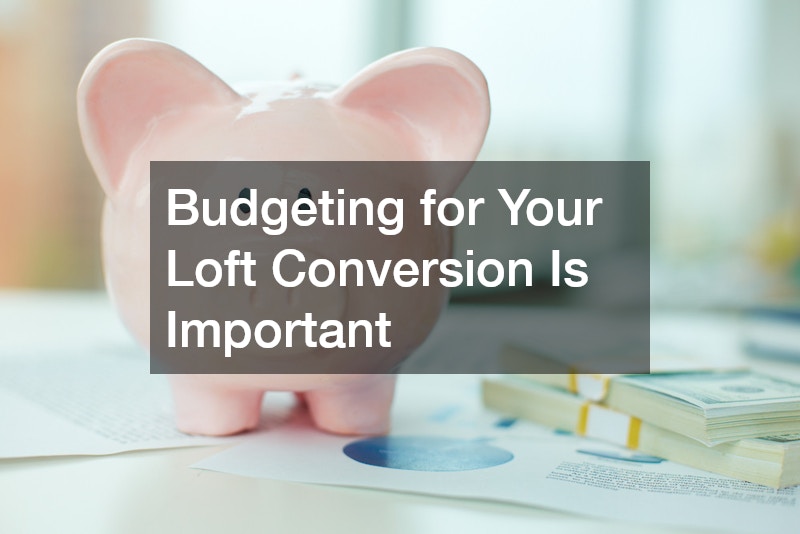A loft conversion is one of the most popular and cost-effective ways to increase the living space of your home. Whether you’re looking to create an additional bedroom, a home office, or even a full floor for a growing family, a loft conversion can add significant value and utility to your property. However, embarking on a loft conversion project requires careful planning and consideration. From understanding the different types of loft conversions to the construction process itself, here’s your comprehensive guide to loft conversion construction.
What Is a Loft Conversion?
A loft conversion is a home improvement project that involves converting your attic space into a usable living area. It typically involves structural changes to the roof space, such as raising the roof, changing the angle of the roof, or creating dormer windows to add height and light.
A loft conversion can dramatically improve the functionality of your home, allowing you to make the most of previously unused space.
Types of Loft Conversions
There are several types of loft conversions, each suited to different types of properties and specific needs. Understanding the options available will help you determine which one is the best fit for your home and budget.
Dormer Loft Conversion Dormer loft conversions are the most common type. They involve the construction of a flat-roofed extension that protrudes from the slope of the existing roof. This type of conversion creates extra headspace and allows for the installation of larger windows, which can brighten up the loft. Dormer conversions are ideal for homes with a sloping roof and are relatively simple to build.
Velux Loft Conversion A Velux conversion, also known as a rooflight conversion, is a simpler option that involves installing roof windows or skylights. Unlike dormer conversions, Velux conversions do not require any structural changes to the roof and are typically the most affordable option. However, they provide less space and headroom compared to other types of conversions, making them better suited for those looking to add a small study or bedroom.
Hip-to-Gable Loft Conversion A hip-to-gable conversion involves extending the sloping side of the roof (the “hip”) to form a vertical wall (the “gable”). This type of conversion is ideal for semi-detached or detached properties and can create a large amount of extra space. Hip-to-gable conversions are more complex and often require planning permission, but they can add significant value to your home.
Mansard Loft Conversion A Mansard conversion is the most elaborate type of loft conversion. It involves altering the roof’s structure to create a steep, almost vertical side, and often includes the addition of dormer windows. Mansard conversions are best suited for homes in areas where space is at a premium, as they offer the most headroom and usable space. They are typically the most expensive option due to the extent of the structural changes involved.
The Loft Conversion Process
Now that you know the types of loft conversions, it’s important to understand the overall construction process. A loft conversion typically involves several stages, from initial planning and design to the final touches. Here’s an overview of the steps involved:
1. Planning and Design
Before construction can begin, you’ll need to assess the viability of your loft conversion. This includes evaluating the size, shape, and condition of the attic, as well as understanding any limitations due to the age or structure of your home. You’ll also need to consider whether you need planning permission, which depends on the type of conversion and the area in which you live.
In many cases, loft conversions fall under “permitted development” rights, meaning planning permission is not required. However, it’s always advisable to consult with a professional, such as an architect or builder, to ensure the project complies with local regulations.
2. Structural Work
Once the design is finalized and approved, the next stage involves the structural work. This includes reinforcing the floor of the loft to support the additional weight, altering the roof structure if necessary, and adding any new walls or supports. If you’re opting for a dormer, Velux, or hip-to-gable conversion, the construction team will carry out the necessary roofing work, such as installing new windows or adjusting the roofline.
During this stage, there may also be the installation of insulation to ensure the space is energy-efficient and comfortable. Depending on the complexity of the conversion, this stage can take several weeks to complete.
3. Plumbing and Electrical Work
Once the structural work is complete, plumbing and electrical work will be carried out. This could involve installing new plumbing for a bathroom or en-suite, as well as wiring for lighting, sockets, and heating. At this stage, you may also want to consider any additional home automation or lighting features to enhance the functionality of the new loft space.
It’s essential to hire qualified professionals to carry out this work to ensure it meets safety standards and local building codes.
4. Finishing Touches
The finishing stage involves plastering, painting, and adding any fixtures and fittings. This is when the space begins to take shape and feels like a true part of your home. You’ll have the opportunity to choose flooring, wall finishes, and other interior design elements to make the loft a functional and inviting space.
Watch the video above to learn more about loft conversions!.

